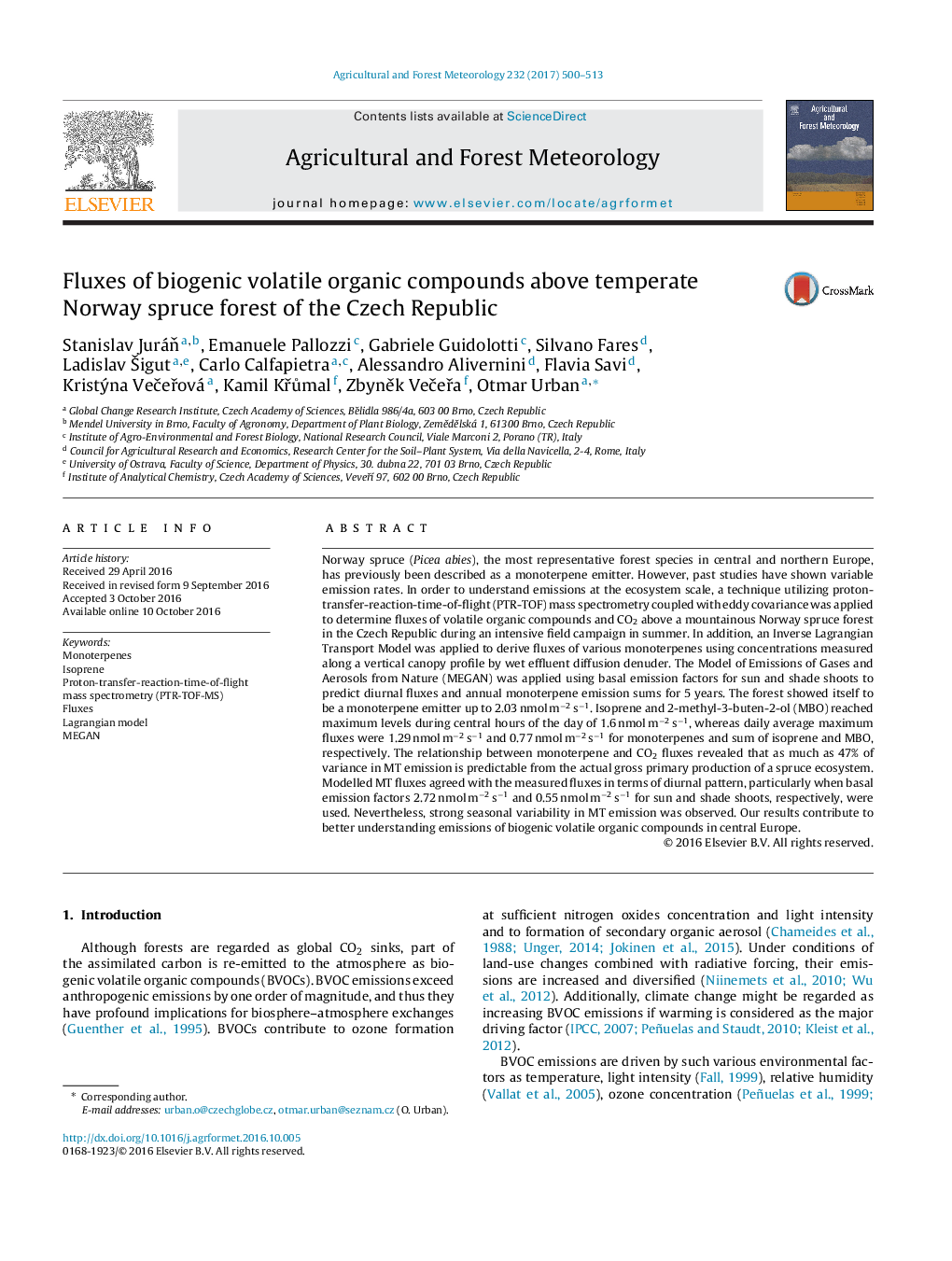| Article ID | Journal | Published Year | Pages | File Type |
|---|---|---|---|---|
| 6458135 | Agricultural and Forest Meteorology | 2017 | 14 Pages |
â¢Fluxes of volatile compounds were measured using various approaches.â¢Daily and seasonal emissions of monoterpenes were modelled using MEGAN.â¢Short-chain oxygenated volatiles occurred to a large extent above spruce forest.â¢Monoterpenes were the most abundant volatiles emitted by spruce forest.â¢MBO (2-methyl-3-buten-2-ol) flux in spruce forest was observed for the first time.
Norway spruce (Picea abies), the most representative forest species in central and northern Europe, has previously been described as a monoterpene emitter. However, past studies have shown variable emission rates. In order to understand emissions at the ecosystem scale, a technique utilizing proton-transfer-reaction-time-of-flight (PTR-TOF) mass spectrometry coupled with eddy covariance was applied to determine fluxes of volatile organic compounds and CO2 above a mountainous Norway spruce forest in the Czech Republic during an intensive field campaign in summer. In addition, an Inverse Lagrangian Transport Model was applied to derive fluxes of various monoterpenes using concentrations measured along a vertical canopy profile by wet effluent diffusion denuder. The Model of Emissions of Gases and Aerosols from Nature (MEGAN) was applied using basal emission factors for sun and shade shoots to predict diurnal fluxes and annual monoterpene emission sums for 5 years. The forest showed itself to be a monoterpene emitter up to 2.03 nmol mâ2 sâ1. Isoprene and 2-methyl-3-buten-2-ol (MBO) reached maximum levels during central hours of the day of 1.6 nmol mâ2 sâ1, whereas daily average maximum fluxes were 1.29 nmol mâ2 sâ1 and 0.77 nmol mâ2 sâ1 for monoterpenes and sum of isoprene and MBO, respectively. The relationship between monoterpene and CO2 fluxes revealed that as much as 47% of variance in MT emission is predictable from the actual gross primary production of a spruce ecosystem. Modelled MT fluxes agreed with the measured fluxes in terms of diurnal pattern, particularly when basal emission factors 2.72 nmol mâ2 sâ1 and 0.55 nmol mâ2 sâ1 for sun and shade shoots, respectively, were used. Nevertheless, strong seasonal variability in MT emission was observed. Our results contribute to better understanding emissions of biogenic volatile organic compounds in central Europe.
